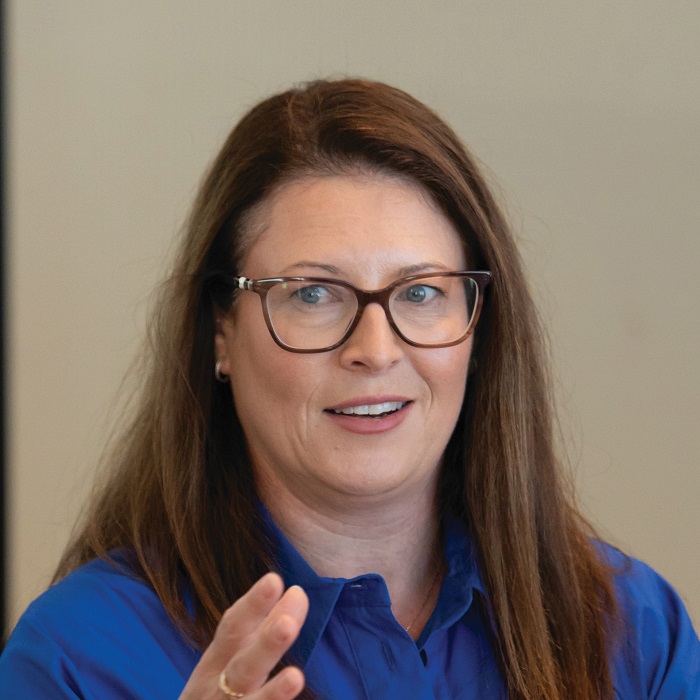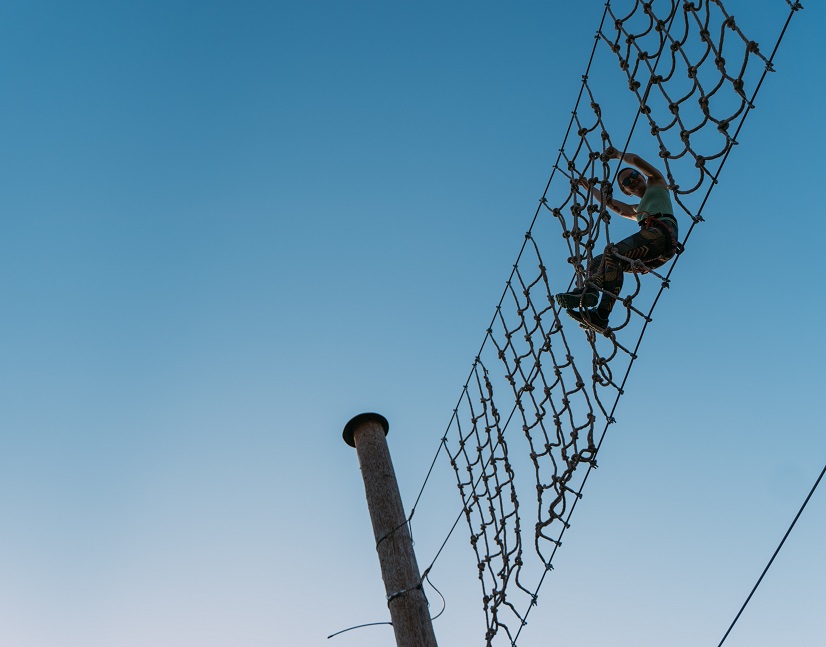
Gender-balanced leadership delivers operational performance
ANZ is taking the lead when it comes to promoting not just diversity within its organisational structure but awareness of the benefits of diversity for performance. A group of industry participants, hosted by ANZ and KangaNews, discuss how and why these advantages exist and the path to delivering them across more of the economy.
DIVERSITY BACKSLIDING
Craig How would roundtable participants assess the state of play in gender diversity in Australian business and markets?
CLAES Chief Executive Women (CEW) produces two reports annually, that I like to refer to as ‘the symptom’ and ‘the cause’. The first is the Senior Executive Census 2022, now in its sixth year. This charts the representation of women in senior leadership teams in Australia’s ASX 300 public companies. It analyses progress in the nation’s top companies.
Disappointingly, the results show we are going nowhere fast. There are only 18 female chief executives in the ASX 300, which represents no improvement since last year. Of equal concern, three in four executive leadership roles are still held by men, only four out of 28 chief executive appointments at ASX 300 companies in the past year were women, and only 50 ASX 300 companies had gender-balanced senior leadership teams in 2020.
Shockingly, more ASX 300 companies have no women in their executive leadership teams. At the moment, 46 of these companies have no women in these roles; it was 44 in 2021. I hope this is not a trend.
Of particular interest to me is the base of the pyramid. A lot of time is often spent looking at the apex. But we cannot fix disparity at the top unless we do so at the bottom, and when it comes to line management roles – which we know are the nursery for chief executive roles – nine out of 10 of these positions with P&L responsibilities are held by men.
This paradigm is also not shifting in any meaningful way. For example, the population of line roles held by women in the ASX 200 started at a low base, of 128 in 2017, and but has increased by a mere 3 per cent since then.
We can hypothesise as to why we are in this holding pattern, and there is a lot of attention and talk. But it does not always equate to the action required. At this rate of change, it will take 100 years to achieve gender balance in chief executive roles.
The good news is there are accelerators and levers that can make meaningful change. If the census is the symptom, its sister report – Take it from the Top – Accelerating Women’s Representation in Executive Leadership – is ‘the cause’.
This research identifies five common success factors at 22 Australian companies that are leading the way for executive gender balance. The key accelerators are executives who are committed and accountable for balanced leadership, actionoriented commitments, targeted talent management, deliberate succession planning and equitable recruitment.
These accelerators comprise a formidable recipe that can be applied to any company, great or small, with success.
Craig Is there a particular reason for the backward step since 2021 – is it pandemic-related, for instance?
VENKATESAN I was unpleasantly surprised to find we had taken a step back since last year in CEW’s results, so I did some further research to get a global perspective. This demonstrated that Australia is not the only country lagging behind.
A report launched by UN Women and the UN Department of Economic and Social Defence showed the rate of progress has gone backwards from where it was and that it could take almost 300 years to achieve gender equality. This takes into account third-world countries but is still very surprising.
I then thought COVID-19 could have had an impact, so I read some more statistics. It is a well-known fact that women are overrepresented in certain industries – such as healthcare, aged care, retail and hospitality. Retail and hospitality, in particular, suffered during the pandemic and lost a lot of jobs. In many cases women have not come back to these jobs.
The question is why. Globally, in 2020, school and preschool closures required 672 billion hours of additional unpaid childcare. The statistics also revealed women shouldered 512 billion of those hours. From my perspective, this shows the pandemic has had a negative impact. I hope we can turn the trend around.
TONKIN I cover corporate finance, which is ANZ’s complex lending business. We classify women in leadership as director level and above. We have made a lot of progress over the last few years. I think a lot of this is to do with the growth in sustainable finance, which – pleasingly – has strong representation from women. Our overall team has seen growth, too. The pipeline of graduate to associate has been robust.
Reflecting on the influence of the pandemic, I would say there has not been as much movement at senior level in calendar year 2022. I am a director on the Women in Banking and Finance (WiBF) board and a member of CEW. This year, wellbeing has been a big priority for me – getting staff back into the office and comfortable with a new way of working. I think this has also contributed to the lack of movement.
BUILDING PATHWAYS
Swiss Is the focus on wellbeing rather than gender another impact of the pandemic?
TONKIN I think it shows that people have been moving less at the senior level than they have historically. We usually see a lot of internal movement, given ANZ has a big internal marketplace. There has been movement within jurisdictions, but movement from the corporate finance business into other areas of ANZ has not been as apparent.
If we think about it as a system, graduates love coming into the debt capital markets and corporate finance areas because of the transactional focus. This means we have a funnel, where we bring people in and push them up to director level. Once they get there, quite often their next move is into other roles outside the team. But this dynamic has not been happening of late. I am not sure if this is specific to my team or a trend across the capital markets.
CHOI We have experienced a very similar pattern. We are very focused on building the mid-level pipeline of female participation. The focus is on identifying our mid-to-senior level female talent and putting them on course.
It can be difficult to know where the aspirations and talents of our female cohort are, so we are trying to identify them and give them exposure to senior management – which means that, when roles come up, women have an equal chance of participating.
This is something we are still in the process of implementing, but I think it will go a long way toward building the talent pipeline. At the moment, women come up through the junior ranks but often end up leaving.
Craig Jimmy Choi, you are global head of capital markets at ANZ, but you also have a role in the women in leadership group at the bank. Can you give some colour on this?
CHOI Within markets, I look after women in leadership – which considers retention and aims to increase the participation of women at senior levels. It looks at the senior cohort of women, talks about them with management, puts them in leadership programmes and showcases their talents to very senior management.
I think building this pipeline is the only way we are ever going to get ahead. I hope that eventually the system replicates itself and gets to the point where we do not need a programme – when participation becomes equal.
However, where we sit today, it is so disproportionate that we need a very focused pipeline, including male allies and advocates. I want everyone, male or female, to understand the programme and support it. Eventually I think this will lead to better participation levels.
Swiss Do diversity challenges differ between countries?
TONKIN Within corporate finance, finding fabulous talent internally or externally is not the material challenge. Great talent is available in the market and every year when graduates come in, I am always blown away with the quality coming out of universities.
The issue is not acquiring talent – it is managing growth and giving women the career path they are looking for. This also has to be done within the context of the banking system, which is very tight on the cost and size of the overall business.
With the exception of sustainability, growth in my team has been very static. We are trying to shift the setup to get better representation, but it is technically easier to achieve leadership on a more gender-neutral basis in a rapidly growing sector. A static headcount presents a challenge in how we go about moving talent around and growing it.
CHOI From my personal experience, if we try hard enough we will find an equally talented woman to perform a role. This is what we have been trying to do. For example, we just hired a very talented woman for our US office. It might not be possible on the first or even second look, but if we are committed to looking for diversity we have found it to be possible.
Venkatesan Does childcare support have a bearing on the ability to attract and retain talent in certain countries? For example, Singapore has a very supportive government policy in this area. Does this make a difference?
NG I am sure the childcare support helps in Singapore, but it does not take away from the concept of the ‘second shift’ for women – that they take on more tasks at home – nor the ‘invisible shift’, with women taking on more work on diversity and inclusion.
As a beneficiary of the women in leadership programme led by Jimmy Choi, I welcome the shift we have seen over the past couple of years. The onus is no longer solely on women to advance themselves in the workplace. There is acknowledgement that it is not an equal playing field and outside factors and responsibilities, such as childcare, come into it.
I have been in banking for a decade. In earlier years, I saw more attrition of women quitting the workforce or markets roles at the junior-to-mid career level given the high-intensity nature of the job. But I have seen a change in the career paths available to me that does not require as much compromise in my other responsibilities.
THAKAR The idea of childcare support looks great from the outside. But if you do not have the support of family it effectively means you are entrusting your children to a stranger.
As well as this, the expectation from the corporate world is that, if you have help at home, you should have no issue staying at work later. But parenting and education are parental responsibilities and not those of a domestic helper. I am not saying this is the case at ANZ, but in previous stages of my career as a lawyer this has been how it works.
I feel really lucky to have sponsors at ANZ who understand that I want to spend time with my children, and who manage this within transactional banking and the work we do. It makes a huge difference to retention, from my perspective.
Craig Shari Jayanithie, as the diversity and inclusion lead for ANZ what do you think about the general direction of travel in this area. Do you think ANZ is making appropriate strides?
JAYANITHIE I agree that the pandemic really threw a curveball at women in leadership, in particular the way a lot of the caring responsibility was put on women. For me personally, being in Melbourne we had so many lockdowns and the kids were always around. It was really difficult.
Sometimes it feels as if we took our foot off the pedal, because the focus shifted to the pandemic and, as Christina Tonkin mentions, wellbeing was a huge part of this.
On the other hand, this year I have seen huge opportunities for women, especially at ANZ. According to the CEW Senior Executive Census data, in 2021, women held only 14 per cent of executive line roles but 36 per cent of functional roles. In 2021, nearly 80 per cent of CEW appointments were made from line roles. This type of experience is critical to step into chief executive or other senior roles, so one of the things we are considering at ANZ is how we build the experience of women in the pipeline to get them ready.
Another priority for us is how we attract women to enter the pipeline in some of our functions. For example, movies do not generally make areas like trading particularly attractive to women. So our strategy is about how we demystify traditional perceptions.
Regarding childcare, it is true that there is more support in countries like Singapore. But we really need to get our leaders to role model flexibility – to empower our people to work flexibly too. For example, last week I was on the phone with Jimmy Choi, who said he was at home because he had just done the school pick-up. We need to encourage our leaders to do more of this. This will help empower the rest of the workforce, whether male or female, to be able to do the same.
Craig Is there a particular approach to attracting women to trading roles?
VENKATESAN I was in the trading function a long time ago, and clearly things have changed – which I think is fantastic. When I was in London, one of my trader colleagues had a child and decided to move into a functional support role. When I asked, her reasoning was that it was the right thing to do – and it was driven by the perception of men in the executive or management teams. She tried the support role for a few months, but she didn’t enjoy it and moved back to trading.
This is an example, but there is a perception that trading is for men and that if you do not have a big personality you might not succeed or might be the odd one out. I know many banks are really focused on changing this perception and making significant efforts to get women into trading roles. I am delighted to hear things are getting better.
Finding a network
In an era of flexible work and employee demands, it would be easy to lose sight of the value of building networks of peers and mentors with a range of experiences. Roundtable participants say personal networks remain critical.
GAAL I am a mentor in the Women in Markets mentoring programme, and one of the common questions I get from mentees is about how they can improve their networking – not so much with other women, but internally with men and women.
I think this piece is key. Younger women at the postgraduate level are keen to accelerate their careers very quickly. I think there is a cross-generational element because in some ways we need to put the brakes on and make sure they are going about it the right way.
They have grown up in a generation where they do not see gender balance as a problem, because they have always been told they can do anything. But we need to mould them through a system that is not quite the same when they get to the big corporate level.
CLAES In my executive experience, impactful networking has been about identifying problems to be solved by constructing crossfunctional initiatives, directly relevant to the strategic pipeline. This requires groups with disparate skill sets to come together to solve a common problem for the organisation.
This approach kills many birds with one stone, such as meeting others, showcasing talents and, ultimately, exposure to the senior team when presenting a project.
It is a utilitarian form of networking. I think it is incumbent on organisations to think laterally about creating spaces, initiatives and tasks that bring talented people together.
GOVERNANCE INPUT
Craig Do directors consider a company’s gender balance or the existence of a clear diversity, equity and inclusion strategy when thinking about taking up a role?
ANDERSON It is important, but I think culture plays a greater part. A contemporary and forward-looking organisation will have gender diversity alongside other elements of diversity, because a successful organisation is built from different thinking and collaboration.
Over the past couple of years, there has been a general theme of greater acknowledgement that we need to consider all parts of the diversity lens. Gender is important, but so are things such as disabilities and different ethnic backgrounds. Getting these into the conversation contributes toward a kinder and more generous environment.
Also, the shift in our political landscape in Australia is very notable in this regard. People have said they have had enough. I was a trader over my 35-year executive career and my eldest son is 25 now, so I have been through all of it. I am so excited about where things are now. COVID-19 has given us so much flexibility. It is delightful to walk around my suburb and see men walking their kids to school.
Then again, a trader role is 24/7. It can be quite flexible, but you are always ‘on’ – and I have found that lots of people do not want to give their life to something like this. Ultimately, it is a choice.
CLAES One of the few benefits COVID-19 delivered was flexibility in remote working. But it is worth noting that we were facing an existential crisis – and in times of uncertainty people tend to become more conservative. For example, a board of directors may choose to renew the incumbent chief executive’s contract rather than review other candidates. Following this thought process, if the decision making team is 90 per cent male, appointing women will seem to be risky.
The antidote to conservatism is regular exposure. Women need to be in meetings talking about strategically aligned initiatives or accountabilities, such as finance, productivity and strategy. This will resonate with decision makers, helps familiarise women from an ‘unknown quantity’ and mitigates the high-risk perception.
The flipside to remote work is potentially lack of exposure. Yes, we can dial in and be seen on Zoom, but there is something magic about being in the room. People respond to nonverbal communication cues such as influence, charisma and clarity of thinking. It is more tangible and compelling in person, and women need to make very deliberate choices about ensuring they will be in the room when decisions are being made.
GAAL The advantage of flexible working is not only the ability to work from home but being able to come in earlier or later to help get a balance. We can still be present in the room but also have flexibility at the end of the day.
This is a big change – it is certainly something we did not have before the pandemic. Leaving to make the six o’clock childcare pickup was always a mad dash, but now we can leave early and log back in from home, do pickup and complete a full workday. It is all done in a more reasonable manner.
This also means someone can coach their child’s soccer team or look after an elderly parent. It balances everyone’s competing needs and brings in a work-life balance element that was not recognised or accepted before.
Craig Have we found a balance when it comes to flexible working and female advancement?
TONKIN This year has been about how we get people back into the office and embrace the new way of working. I think we still have a way to go in getting a shift in scale across the organisation, and uniformity. Next year will still require a lot of focus on wellbeing and team health, and will be about embedding a new way of working that we want to use going forward.
We will also need to put a lot of focus toward staff learning and development. Over the past couple of years, I have begun to transition programmes that have historically been face-to-face to a more hybrid format. Everyone is aware of the high cost of airline tickets, so there are benefits of this as well.
Programmes run in Australia, such as through the WiBF and other professional development bodies, are incredibly important for business leaders to make sure they are investing in their staff’s learning journeys.
COVID-19 was the ultimate game changer. We can either look at it as a challenge or as an opportunity to change the workplace.
I am hopeful for 2023. This year, I have craved stability in my senior ranks, given the movement in the mid- and junior levels. A lot of people have said they would like to do something different next year. But rather than the ‘great resignation’ I think we will see the ‘great shuffle’. I am expecting a lot of my team to ask about opportunities to work overseas, for example.
GIRARD As chief executive of WiBF, I have had the opportunity to connect with more than 70 of our members in the past few weeks and hear about what is happening in the industry. They have told me about what they are doing to increase the number of women in leadership positions, and how the past few years have affected them.
We have 90 corporate members across Australia, 12 of which are universities. We are working with graduates to build up the pipeline and we are also exploring how we can bring all genders to the conversation.
Wellbeing will also be top of mind. We will launch five new programmes in 2023 based on member feedback. There is great desire within organisations to get more support for new recruits, interns and recent graduates. They want to start building a pipeline of future leaders, and this does not happen overnight.
We need to look at the big picture. We need to adapt and offer our members more flexibility to do the programme at their own pace. If someone does not want to connect at the same time every week, is travelling overseas, has a client meeting or needs to pick up their kids, they still get the opportunity to be a part of the class. We need to make sure no-one is left behind by providing them with multiple opportunities to excel in their current or future roles.
We are also seeking to support members outside Australia. We recognise that a lot of our members work internationally, including in Hong Kong, Singapore and New Zealand. We want to bring opportunities to them and break barriers.
Although WiBF expanded its online offering and its scope as a result of COVID-19, it was also wonderful to finally hold our first in-person national industry awards celebration, in September. More than 400 individuals gathered at the Ivy Ballroom in Sydney. The event created a buzz and celebrated the talented women leading by example across Australia’s banking and finance industry, as well as those men and organisations working to improve gender diversity across the sector. These types of events are also a great opportunity to build a network and meet new people in the industry.

WOMEN IN CAPITAL MARKETS Yearbook 2023
KangaNews's annual yearbook amplifying female voices in the Australian capital market.















